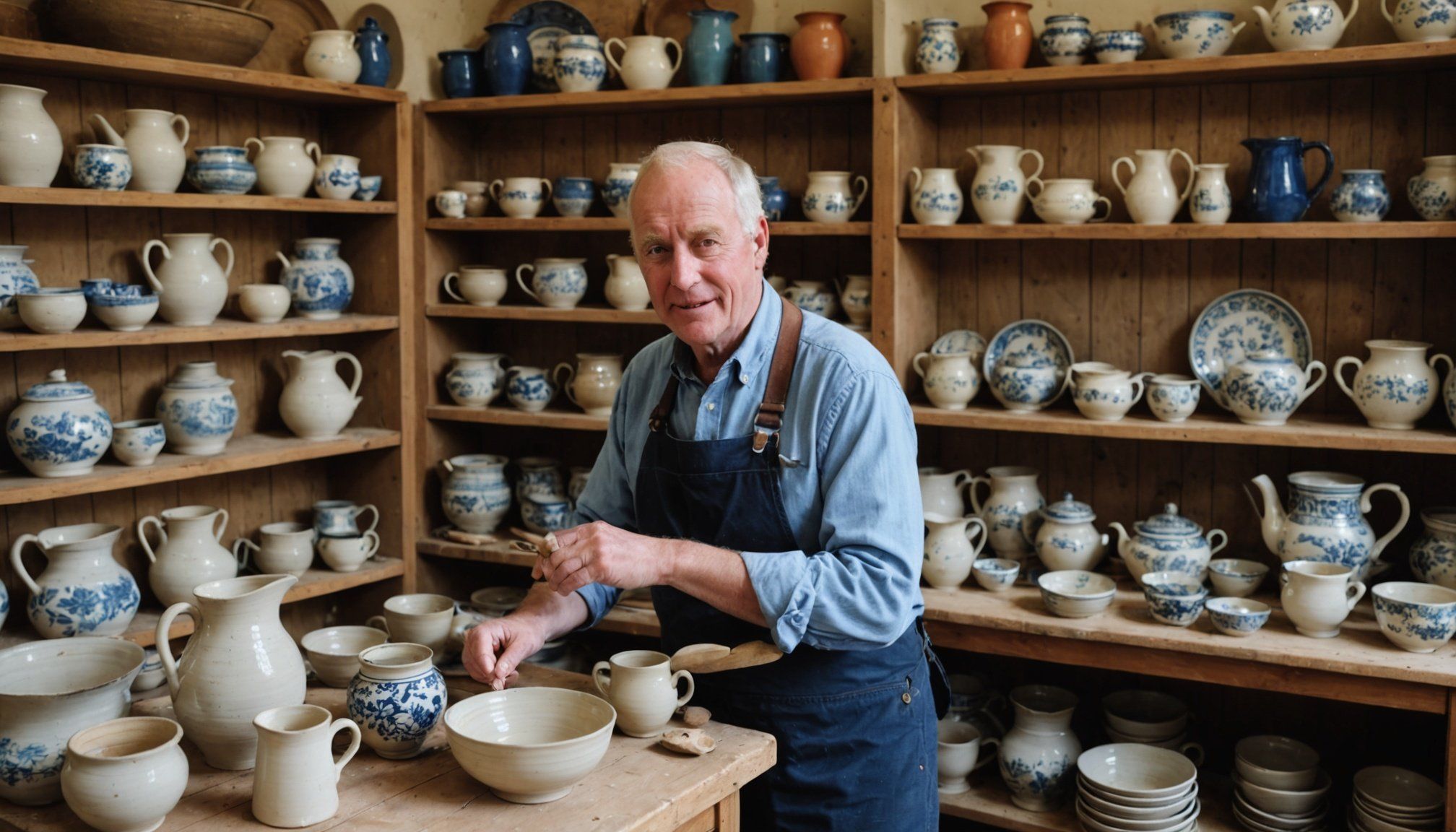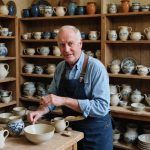Overview of British Pottery Studios
British pottery studios are cherished hubs where traditional craftsmanship thrives, each narrating profound stories embedded in historical significance. Pottery, an integral part of British culture, reflects the rich tapestry of the nation’s past, from the intricacies of royal crockery to everyday earthenware. These studios preserve traditional techniques, often passed down through generations, ensuring that skills are honed and legacy maintained.
Pottery styles vary across regions, offering a vibrant mosaic of designs, each with distinct methods and characteristics. In the north, you might find stoneware with robust forms and earthy tones, famous for its durability and historical roots. Meanwhile, the south might offer delicate porcelain, a nod to contemporary influences harmoniously blending with age-old techniques.
Also read : Exploring Somerset’s Genuine Cider Crafting Traditions: An Immersive Journey into English Heritage
Visiting these studios is truly a tourist guide in itself, offering immersive journeys into the heart of pottery artistry. Whether you prefer marvelling at finished pieces or engaging hands-on in workshops, these studios promise authentic experiences. As you explore, you are not just witnessing the creation of art but are also partaking in a cultural preservation effort, ensuring that these skills continue to inspire future artisans. Embrace the opportunity to connect with the venerable traditions of British pottery and appreciate the meticulous craftsmanship on full display.
Notable Pottery Studios to Visit
Visiting the best pottery studios in Britain provides opportunities for authentic experiences, enriching your understanding of the art. Here’s what to expect:
Topic to read : Discover Glasgow’s Top Venues for an Authentic Scottish Ceilidh Dance Adventure
Studio Name 1
Studio Name 1 is celebrated for its unique offerings, carving a niche with specialties that captivate visitors. It showcases a diverse array of masterpieces, reflecting skilled craftsmanship. Visitors can engage in hands-on workshops, where they gain comprehension of pottery techniques directly from experienced artisans. Testimonials highlight the studio’s welcoming ambiance and expert instructors, offering a praised learning adventure. Many recount their enchantment with the studio’s dedication to preserving traditional craftsmanship while fostering beginner creativity.
Studio Name 2
Built on historical significance, Studio Name 2 remains a pillar within the pottery community. Craftsmen here are revered for their meticulous techniques, integral in crafting remarkable pieces reflecting rich cultural heritage. Visitors praise the accessibility of the studio, with convenient visiting hours accommodating flexible schedules. As guests explore, the studio’s historical aura and socioeconomic contributions become apparent, enriching their overall experience.
Studio Name 3
A cornerstone of community involvement, Studio Name 3 actively engages locals, strengthening its cultural impact. Offering special events and seasonal exhibitions, it becomes a dynamic tourist attraction. For those arriving by public transport or private vehicle, transportation options are numerous, ensuring a hassle-free journey to this pottery sanctuary.
Pottery-Making Techniques
Exploring pottery-making techniques offers a fascinating peek into the intricate art of combining tradition with creativity. Predominantly, British pottery techniques adhere to time-honoured processes, ensuring each piece’s authenticity and heritage preservation.
Central to these methods are the fundamental steps of forming, drying, and firing, which dictate the final product’s quality and appearance. Artisans typically commence with raw clay, shaping it using manual skills or tools such as wheels and molds. Traditional tools include the potter’s wheel, various carving knives, and brushes, each serving a unique role in crafting exquisite detail.
Tourists keen on immersing themselves in this practice are often welcomed into workshops, where they engage with experienced potters, learning techniques hands-on. Participants acquire first-hand understanding of the skills required to produce pottery, making these sessions not only educational but also an authentic experience.
Furthermore, these experiences emphasize the importance of materials—like different clay types, glazes, and oxides—each imparting unique properties and aesthetics. Engaging in workshops at pottery studios allows visitors to truly understand the depth of craftsmanship skills and cherish the enduring legacy of pottery-making. These sessions transform passive observation into active participation, fostering a deeper appreciation for the craft.
Tips for Visiting Pottery Studios
Exploring British pottery studios can be a delightful adventure if you plan your visit wisely. Here are some travel tips to enhance your experience.
To truly immerse yourself in authentic experiences, try visiting during the weekdays. Studios are generally less crowded, allowing for more personalized interactions with artisans. Early mornings are ideal, offering a tranquil start to your tour.
When visiting, it’s important to respect pottery studio etiquette. Always ask before touching any pieces, even if they appear sturdy. Appreciate the craftsmanship skills with your eyes first and be mindful of your surroundings. Engaging with artisans respectfully encourages a positive atmosphere conducive to learning.
Another key tip is to have a strategy for selecting and purchasing pottery. Consider the pottery styles that resonate with you: Do you prefer the robustness of stoneware or the delicate intricacy of porcelain? Decide a budget beforehand and inquire about shipping options if you spot a must-have piece that’s too large to carry.
As a tourist guide, these studios not only present exquisite artistry but also instruct on the enduring legacy of traditional craftsmanship. Your visit can support cultural preservation, so embrace these opportunities thoughtfully.
Visual Guide to Pottery Styles
Embarking on a journey through British ceramics reveals a diverse tapestry of pottery styles, each with its own unique charm. This visual guide introduces the distinct characteristics, production methods, and historical significance of various styles, offering enthusiasts a clearer understanding of British artistry.
Stoneware
Stoneware is renowned for its durability and earthy aesthetic. Crafted through high-temperature firing, these pieces boast a robust form and stone-like quality, ideal for everyday use. Historically, stoneware played a crucial role in British pottery, recognised for its unparalleled durability and contribution to evolving crafting techniques.
Earthenware
Earthenware captivates with its unique features, including its porous nature and vibrant glazes. Fired at lower temperatures than stoneware, its popularity spans teapots and decorative items with intricate designs. The rich, warm hues and varied patterns make earthenware a favourite among collectors.
Porcelain
The creation of porcelain involves meticulous craftsmanship, offering an exquisite blend of quality and elegance. This delicate ceramic, celebrated for its translucency and smooth texture, draws on both tradition and contemporary influences. Artisans marry age-old techniques with modern intents to craft porcelain pieces that reflect timeless beauty.
Map and Directions to Pottery Studios
Navigating to pottery studios across the United Kingdom can be both straightforward and enjoyable, especially with a visitor guide in hand. To facilitate your journey, an interactive map showcasing the precise locations of these studios is indispensable. It provides detailed directions, ensuring you can plan your visits efficiently, whether you’re on a pottery pilgrimage or seeking an impromptu detour.
Public transportation options abound, making it convenient for those preferring not to drive. Many pottery regions are well-served by buses and trains, connecting major cities to even the most quaint village studios. Checking local timetables in advance ensures you don’t miss out on any enlightening visits. Additionally, for those driving, each studio is typically signposted, guiding you through picturesque landscapes.
For those interested in a more leisurely approach, there are recommended routes for scenic drives that encapsulate the charm of the British countryside. These routes not only lead you to your pottery destination but also offer stunning views of rolling hills, historic landmarks, and charming towns. Planning your pottery studio map visits with a scenic drive enriches the experience, merging art exploration with nature’s beauty.










